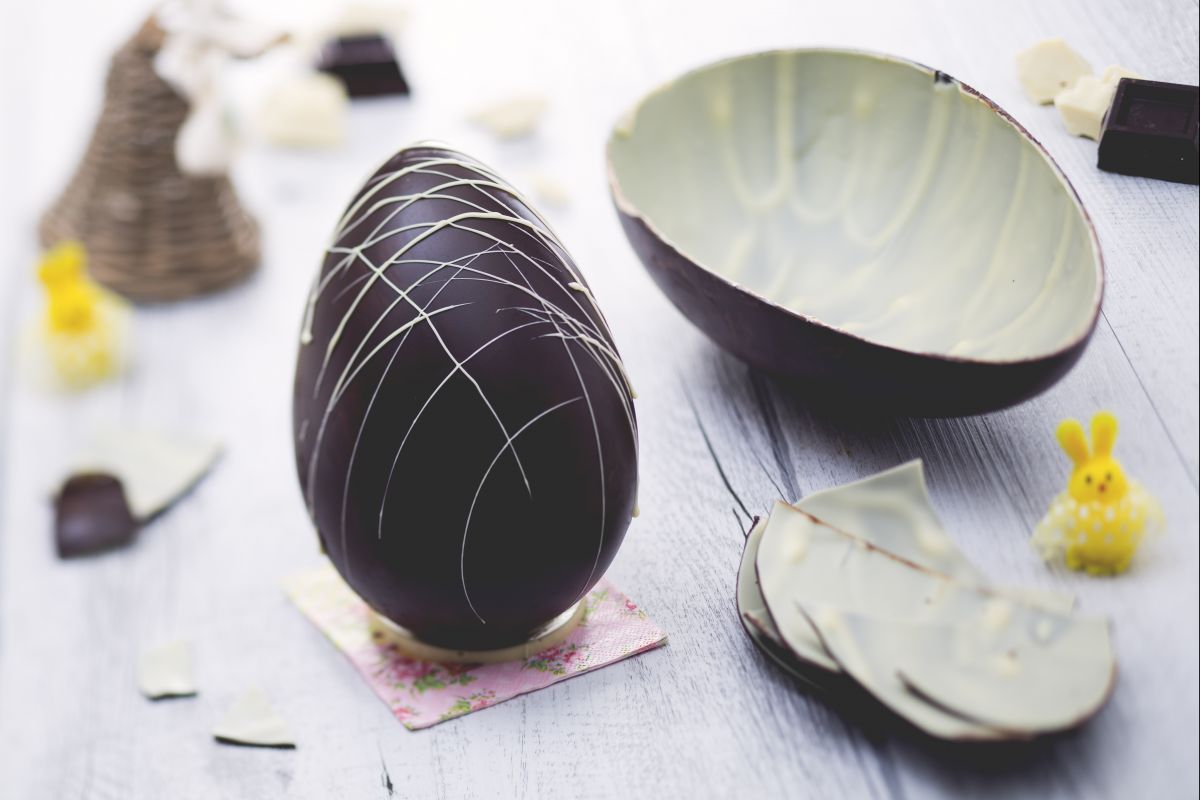Two-flavor plumcake with pistachio and orange
- Easy
- 1 h 30 min
- Kcal 921

Easter in Italy is really all about family, fun, and of course, chocolate. And look, a two-flavor Easter egg with dark and white chocolate is a sweet tradition everyone loves. The creamy richness of white chocolate? It pairs so perfectly with the deep, slightly bitter taste of dark chocolate.
The excitement isn’t just about flavor; it’s also about discovering surprises inside. In Italian homes, crafting these chocolate eggs is a tasty activity—pretty much a must-do—and many people love adding little treats or toys, just like those traditional Easter eggs in Italian shops. Kids and adults alike are thrilled to crack the egg open. You know, revealing the fun inside is the best part. The mix of flavors isn’t just for show; it’s a perfect balance, with the silky white chocolate mellowing the more intense dark chocolate. And really, it’s magical.
But hey, the creativity doesn’t stop there. Some families switch things up by using milk chocolate or adding a hint of orange or hazelnut to really really make the flavors pop. No matter the combination, you end up with a moist, velvety chocolate egg that melts in your mouth—super tasty. Around Easter time, homemade eggs like these are everywhere in Italy, from quaint villages to bustling cities. Friends and families challenge each other to see who can craft the coolest dark and white chocolate Easter egg or come up with the most imaginative surprise. Everyone personalizes their creation, whether it’s a favorite filling or experimenting with chocolate molds.
So, here’s the thing: making a DIY chocolate Easter egg is about more than just the chocolate. It’s about making memories and sharing joy with loved ones. That’s why the two-flavor Easter egg has become a cherished tradition. These golden, chocolatey delights remain a staple of Italian Easter celebrations. They never go out of style—bringing a bit of magic to the holiday every single year. Seriously good stuff.
You might also like:

To prepare the two-flavor Easter egg with dark and milk chocolate, start with the tempering of the dark chocolate: chop the chocolate 1 and melt it in a bain-marie (it's preferable that the water in the pot does not touch the bottom of the bowl where you placed the chocolate); measure the temperature with a thermometer 2 and when the chocolate reaches 129°F, dry the bottom of the pot and pour 2/3 of it onto the marble slab positioned on a work surface (the marble slab is important because its coolness allows the chocolate to quickly reach temperature) 3

begin to work the chocolate on the marble slab, with a spatula 4 and a scraper 5, spreading it on the surface. When it reaches 82°F, transfer it to the bowl where you left the remaining 1/3 of the chocolate and mix: the chocolate should reach 88/90°F 6. If during these phases the temperature drops too low, always keep the pot of the bain-marie with hot water handy to slightly warm the chocolate. Conversely, if it's still too hot, repeat the operation of spreading on marble with a small part of the chocolate.

Pour the tempered chocolate into a 9.84-inch Easter egg mold; distribute the chocolate up to the edge by rotating the mold. After 1 minute, turn the mold upside down on a tray and let the excess chocolate drip out, gently tapping the mold to eliminate air bubbles. You can let the chocolate rest for about 20 minutes with the mold resting with the full side on the work surface. In the meantime, start tempering the white chocolate: chop the white chocolate and melt it in a bain-marie following the instructions for the dark chocolate. The temperature of the white chocolate should reach 113°F; then transfer 2/3 of the chocolate onto the marble surface and start spreading it with a scraper 9.

The chocolate should reach a temperature of 79/81°F. Then, pour it into the bowl where you left the 1/3 of chopped chocolate and mix to melt it; measure the temperature which should be 81/82°F. If during these phases the temperature drops too low, always keep the pot of the bain-marie with hot water handy to slightly warm the chocolate. Conversely, if it's still too hot, repeat the operation of spreading on marble with a small part of the chocolate.

At this point, when the dark chocolate has set in the mold, pour the white chocolate (at 81/82°F) to cover the dark chocolate and rotate to distribute it evenly 13. Then after 1 minute, turn the mold upside down to let the excess chocolate drip out 14 and let it crystallize for about 20 minutes. You can then trim the edges of the egg with a scraper to eliminate chocolate peaks; let it set for about 2 hours, placing the mold on a work surface with the concave sides facing up. If the temperature is too high (above 68°F), place the mold in the refrigerator to crystallize. Once it's solidified, you can turn the mold upside down and press lightly to release the egg halves 15.

Heat a pan larger than the egg, then place it hot on the work surface and lay one half of the egg at a time with the edges facing the bottom 16; hold for a few moments to slightly warm the edges, then stick the two halves together 17. You can insert a surprise and then press the two halves together for a few minutes to let them seal perfectly. Your two-flavor Easter egg with dark and white chocolate will be ready to be gifted and enjoyed on Easter day! You can decorate it with strands of leftover white chocolate, using a piping bag with a small hole.